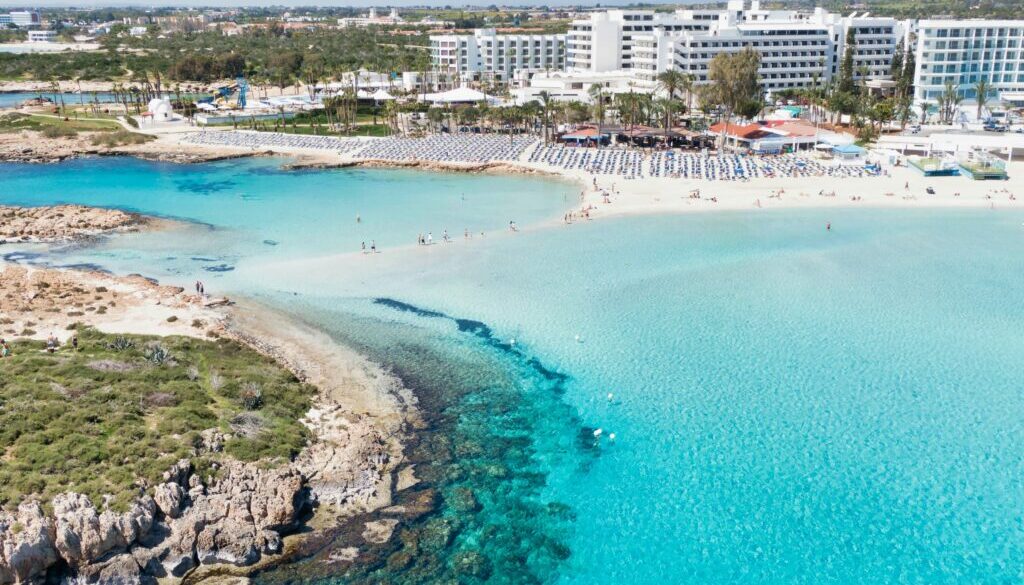Ayia Napa: The Party Capital of Cyprus
History of Ayia Napa
Ayia Napa, currently the most favored seaside destination in Cyprus, has a history that blends myth, religious heritage, and swift contemporary changes. The name originates from the Venetian-era monastery dedicated to the Virgin Mary of the Forest (Panagia tis Napa), with “Napa” signifying wooded valley in ancient Greek.
The region stayed mostly unpopulated for thousands of years because of scarce water resources and cultivable land. The earliest recorded mention is from 1366 CE, when the chronicler Leontios Machairas referenced a concealed icon of the Virgin Mary discovered by a hunter in a wooded cave. This cave served as the foundation for the Ayia Napa Monastery, built circa 1500 CE during the Venetian period.
The 1974 invasion of northern Cyprus by Turkey shifted tourism from Famagusta to Ayia Napa. Northerners who sought refuge established themselves here, initiating swift progress. By the 1980s, the village transformed into a hub for nightlife, with an increase in clubs and bars lining its shores. The 2000s established its status as a Mediterranean party competitor to Ibiza, fueled by UK garage music and youthful tourism.
Today, Ayia Napa blends its party image with family-oriented beaches and cultural attractions such as the monastery and Cape Greco National Park. It attracts more than 500,000 visitors annually, enticed by sites like Nissi Beach and the harbor filled with sculptures.
Notable Historical Places in Ayia Napa
Monastery of Ayia Napa
The 16th-century Venetian monastery is the city’s oldest site, constructed around a cave where a concealed icon of the Virgin Mary was found. The medieval architecture, featuring a 600-year-old sycamore tree and rock-carved underground chambers, showcases its significance as a spiritual center. Currently, it functions as a center for Ecumenical Conferences and a museum.
Makronissos Burial Sites
This necropolis from the Hellenistic period (3rd–4th century BCE) includes burial chambers carved into rock and an adjacent sanctuary. Discovered in the 1980s, it provides understanding of historical burial customs and commercial connections with Egypt and Greece.
Ayia Napa Aqueduct
A structure from the Venetian period that previously directed water to the village and monastery. Its curved stone structure showcases the region’s early hydraulic engineering.
Sculpture Garden
Opened in 2014, this outdoor museum showcases over 200 sculptures created by artists from around the globe, merging art with the surrounding nature. Topics vary from mythology to contemporary abstract pieces.
The Fisherman: Celebrates Ayia Napa’s fishing heritage.
Kemitzides Family Statues: Honors the 18th-century pioneers who established the village.
Ayia Napa’s Mermaid: A sculpture with two tails drawn from Greek mythology.
Cape Greco National Park
Although mainly a natural area, its cave formations in the cliffs and ancient observation towers possess historical importance as vantage points for defending against pirate attacks.




